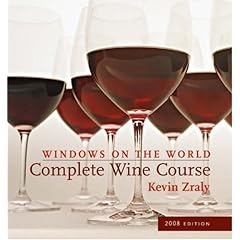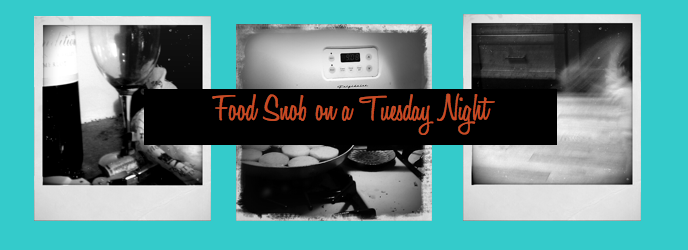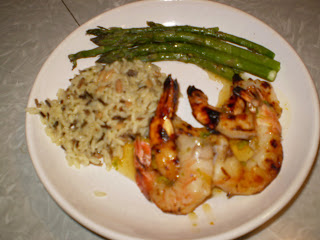People often ask me how I know so much about wine. The easiest answer to that is that I
don't know very much about wine, I just like it. However, I do realize that I've become one of the "go-to" people at work when a wine question arises for a reason. To get circular on you, that reason is simply because I like it, and like talking about it.
So, how does one get to that comfort level of being able to talk about wine with out a whole bunch of disclaimers? Where do you start? I've been mulling over a post like this for a while, and these are the suggestions I've come up with.
1. For starters, you already DO know a lot about wine.I firmly believe that wine is not a mythical unicorn that absolutely requires a special set of rules and vocabulary to understand. Wine is a taste-based beast. Taste is a sense, just like sight and hearing. Most everyone would eagerly agree that other things that rely on the senses, say, music and paintings, are subjective, and indeed that art in general is subjective. I'm not quite sure how wine has escaped this classification, but its always seemed to me that wine, seeing as how it relies on an individuals taste buds to be processed and judged, is a form of art like any other, and thus should be judged on the same basic criteria: good art is subjective, and the real test is weather or not you personally like it. People have different tastes, and here it applies rather literally. So this is lesson number one: no wine (as with music or paintings) is inherently and universally good. It is only good if
you like it. You're the one who's drinking it; if you think it tastes horrid, what does it matter what
Wine Spectator had to say about it?
Of course, as with music and paintings, there are things that a vast majority of people consider to be great, the Beatles for instance, or Van Gogh's
Starry Night. Wine, too, has these anomalies. Even so, there are people out there who will readily tell you that the Beatles are rubbish and starry night is ugly. So it goes in a subjective world.
2. Give constructive criticism.If you've ever been in an English class, art critique, writing workshop, film class, band, or any other guided situation in which you were expected to critique something, chances are, one of the parties involved declared said poem/song/painting/film/ceramic pot to be "bad" and stated that they "don't like it". And, chances are, that whoever was in charge at that moment implored them to give a detailed explanation as to why. Theres a moral to this story: just because you're opinion is the only one that counts doesn't mean that you don't have to back it up. Granted, when you're having a glass of red at the kitchen table and announce that you don't like it, Mrs. Tank will not be there starting over her glasses with a death stare asking for an explanation. I would suggest, however, that you imagine her there, and this is why:
Since we've established that wine tasting is highly subjective, in order to communicate effectively about wine (and, indeed, to know your own tastes) you need to be able to tell me what exactly it is you don't like about it. For instance, I may not like that a given bottle of sauvignon blanc tastes like I got hit in the face with a peach. I would describe this bottle as not very good. You, however, love fruit forward wines and consider this one of your favorite bottles. Both of us are correct, you see, and it even makes perfect sense.
So, a hypothetical: Our friend John walks up, carrying aforementioned Sav blanc. He asks how this bottle is. Now, its choose your own adventure time.
you can:
A. Tell John its the worst bottle of wine you've ever had in your life, while talking over your friend who is simultaneously telling john that its their favorite bottle of wine.
B. You can both tell John in unison that it tastes like biting in to a ripe peach, and let John decide if that sounds appealing or not.
...if you chose 'A' John's head exploded and no one involved drank any wine because they were otherwise occupied attending a certain John's funeral.
If you chose 'B', you (I hope) now understand the importance of constructive criticism.
Obviously, this lesson applies to bottles of wine you like is well: identify the specific qualities that are leading you to judgmental conclusions.
This is the exact point where the wine-fear-ers (you know who you are) shout "BUT WAIT! I don't know anything about wine!! How am I supposed to know what to say it tastes like? No one ever taught me those fancy wine words!" *wail* *dramatic faint*
I'm here to tell you theres no need to be ashamed, and no need to shut down. In fact, I do believe this has got to be one on the best kept secrets about wine: the Is NO fancy unique vocabulary that is necessary to adequately taste wine. Right now, I can think of exactly two words used to describe how wine taste that are not apart of the average English speakers vocabulary: Tannin and Cassis.
Tannins are a chemical compound found in the stems and skins of grapes, and produce that feeling that all the moisture is being sucked out of your tongue (tannins are also found in tea leaves and unripe fruit). And cassis is a fancy way of saying Currant, as in the berry.
Other than that (and don't worry about tannins right away, you'll understand them in time) all your doing is looking to recognize flavors (and scents) your already familiar with.
What do you taste? chocolate? smoke? wood? dirt? raspberries? vanilla? bubble gum? Also, bear in mind that you don't have to be nice. Nail polish remover and wet dog are fine answers too.
Two technical side notes:
1. No need to make obnoxious noises or fish faces, but do try and make sure you get the wine in contact with all of your mouth: a quick, quiet, swish will do. Different parts of your mouth/tongue taste different things... make sure you give all the flavors a fair shot to be heard.
2. Most wine, particularly red, will "open up" when you let it sit open. This means, that as the wine interacts with the air more subtle flavors will appear, making the wine generally more pleasant to drink. Don't judge on the first sip. Let it sit in your glass a absolute minimum for 5 minutes, often up to 20. You'll notice flavor changes from the first sip to the last. And also, the next day you may find a totally different bottle.
Last but not least:
Get a wine journal. It doesn't have to be a $20 book that came pre-labeled "wine journal"; a 50¢ spiral bugger with "wine journal" scrawled across the front in sharpie will do. Do everything in your power to write down every bottle and any flavor notes. Writing it down will "cement" it more than just thinking it, and, its rather handy to ensure you don't keep re-buying bottles you don't like.
If keeping a journal is just too structured for you, talk to someone about it. Tell them what you think, have them share their opinion. The moral here is to get out of your own head in to a more concrete form.
3. Now that your constructively criticizing wine, I will admit that although you don't need outside resources, there are a few that are extremely helpful.
The book yo u need: The (new) Wine Lover's Companion
u need: The (new) Wine Lover's CompanionThis isn't a textbook, nor a guide to tasting. Its more like the best one-subject dictionary you've ever picked up. I use it at least once a week. Make a habit out of looking up words on the label you don't recognize. Its a good way to build knowledge slowly and in digestible chunks.
And, as a side note, there is also
The New Food Lover's Companion that I also recommend highly. If you consider yourself a food/wine nerd, or aspiring nerd, or just like to eat or drink, these are necessary additions to your library. I know there are a lot of food and wine "dictionaries" and"guides" out there, but these are by far the best I've run across.
Particularly if you're worried about vocabulary, but even if your a registered sommelier, you need to watch: Gary Vaynerchuk.
Gary Vaynerchuk.This guy is revolutionizing the wine world. Hes young, he's out of his goddamn mind, and he knows his stuff. He owns a wine store in New Jersey with his dad, and films this "video blog"/ internet TV show every week day. Insightful and goofy, he's not to be missed. Check out his episodes on your own at
tv.winelibrary.com, or start with one of my
favorites.
If you really really want some structure:Both of these tasting guides have come highly recommended form various wine gurus in my life, and, though I don't own either of them (yet), I feel extremely confident in recommending them.
 Windows On The World
Windows On The World by Kevin Zraly.
The famous and multi-talented Mr.Tuna swears this is the book to have. And I believe him. Tuna is a wine knowledge machine, in addition to having been a marine and Trader Joe's manager, he once tried to extract DNA from oat bran (it doesn't work, apparently. Stick with the wheat germ). The book is written by the former sommelier of the Windows On The World restaurant, which was in the World Trade Center. It was a big deal restaurant. I'm ordering it from amazon today, book review to come.
 How to Taste
How to Taste By Jancis Robinson
Another recommendation from a manager, Kerrie, who also knows her stuff (she opened some restaurants, not sure about her experiences with wheat germ). As I recall, she noted that while the book seems sort of cheesy, it's extremely informative, easy to follow and genuinely helpful. As I understand it, this book will outline tasting exercises and is more step by step. Jancis Robinson is a BIG deal-- she generally held to be one of the top wine writers and scholars, if you will, in the world.
 This is where we started Friday afternoon.
This is where we started Friday afternoon. Kyle and Chris diligently drilled holes with a chainsaw and pounded
Kyle and Chris diligently drilled holes with a chainsaw and pounded I stacked the cracked cement. We made progress.
I stacked the cracked cement. We made progress.













